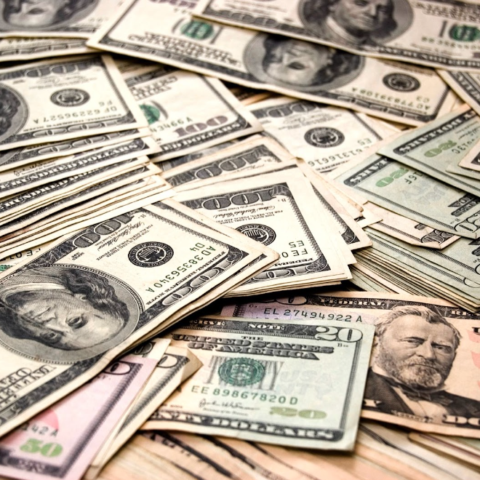By: Alex Edquist
On March 5, the Dow Jones Industrial Average broke a record by closing at 14,253.77. The previous record had been set in October 2007, just before the financial crisis began. For the next week and a half, the Dow continued to climb, breaking its previous record every day until closing at 14,539 on March 14. But in contrast to 2007, when the country cheered the stock market on, this time the Americans who did notice the Dow’s success were worried by the prospect of what they considered to be an inevitable downturn. The Dow is considered a measure of economic health, but the strong bull market contrasts with persistent high unemployment, stagnant wages, and sluggish growth and thus seems unsustainable. Is the stock market forecasting a stronger economic recovery, or is it now operating in a different economic sphere from most Americans?
The Dow Jones industrial average is measured by taking the stock prices of 30 select companies, adding them, and dividing that number by a scale measure that accounts for change in the selection and number of the companies over time. Despite being the primary measure of the stock market’s condition, the Dow is a very narrow measure of the stock market because it includes only 30 companies. However, Standard & Poor’s 500 Index, a much broader survey of stock prices, also closed within two points of a record on March 14.
There are many reasons for the stock market’s recent success. First, corporate productivity has soared because of improved technology and job outsourcing. One company whose stock is represented in the Dow, United Technologies, has utilized technology to increase revenues by 26 percent in the last seven years but also plans to cut 7,000 jobs between 2012 and 2013. Another company in the Dow, 3M, added 10,000 jobs overseas but only 608 in the United States. Second, many corporations have increased profits by expanding into growing markets like China and India, and most of those represented in the Dow Jones and the S&P500 are international corporations. Finally, the Federal Reserve has kept interest rates low to encourage lending and grow the economy, and this has made investing in stocks a more attractive option than leaving money in the bank.
At the same time that the stock market is flourishing, the average American sees only economic malaise. It is no secret that the United States today has a large and growing amount of income inequality. For most Americans, household incomes and wages are stagnating. From 2009 to 2011, the incomes of the bottom 99 percent actually shrank 0.4 percent. Wages have historically been more than half of the United States’ gross domestic product, but in recent years they have tumbled from 49 percent in 2001 to just 43.5 percent today. Some economists have argued that looking purely at wages is inaccurate because employee benefits, especially healthcare, have increased at the same time, but even total employee compensation is at its lowest point in 50 years. Corporate profits are growing far faster than disposable incomes: since 2008, disposable income has only increased by 1.4 percent while corporate profits have surged by 20.1 percent.
Although corporate profits are soaring, companies are not reinvesting that money. Instead, corporations are sitting on a record amount of cash: $1.45 trillion at the end of 2012. That cash is often paid out to shareholders, hence the healthy stock prices. Part of the reason for the cash hoarding is the aforementioned rise in productivity. Because they can achieve the same or greater sales with less capital and personnel, corporations do not need to invest as much of their profit. There are also many corporations that are stashing profits in offshore bank accounts rather than bringing them back to the United States and paying taxes on them.
However, economic uncertainty is also part of the problem. The reason the recent recession is more often called the “financial crisis” and not the “housing market crisis” is that the housing bubble caused a meltdown of capital markets, and many banks and corporations failed because they could not access enough funds to pay off their (oftentimes quite large) debts. Should that happen again, the large cash reserves corporations are currently holding would allow them to remain viable. This is actually a sensible strategy for corporations; for example, its large cash reserve at the beginning of the financial crisis was one of the reasons why Ford Motor Company was able to survive without bankruptcy or a bailout, unlike GM and Chrysler. With Congress continually failing to address serious economic questions like the fiscal cliff, the debt ceiling, and the sequester, the ongoing euro crisis, and slowing growth in markets like China, corporations have many reasons to be nervous about their economic future and want to hold onto large amounts of cash.
So what does this have to do with the Dow’s record? Ironically, many of the facets that have made the stock markets so strong— low interest rates, high cash reserves, low wages—are symptoms of a struggling economy. It would be irrational to suggest that a stronger economy would be worse for the stock market because strong economies with high consumer demand are as good for corporations as they are for individuals. It is difficult to discern whether the Dow is no longer the economic indicator it once was or whether the upswing in the stock market is showing that recession policies are working and general economic prosperity is forthcoming. But what seems most likely is that the Dow is reflecting the prosperity of the wealthy at the expense of the poor and middle. Traditionally, Wall Street has been the domain of the rich, but a large majority of Americans have participated in the stock market and shared in its gains. Today, however, fewer Americans own stock than in decades. Only 54 percent of Americans own stock, compared to 67 percent in 2007 when the Dow last set a record. And richer Americans are more likely to own stocks: 87 percent of Americans earning $75,000 or more per year own stocks.
With all this taken into consideration, it is little surprise that more people disregarded the Dow’s record-setting performance as an economic anomaly than celebrated it as a heartening economic achievement.

